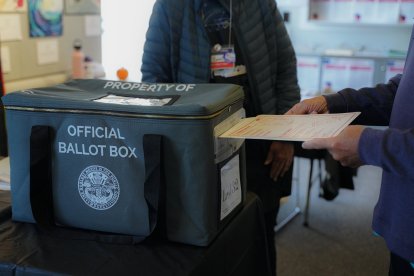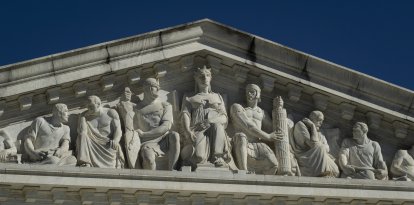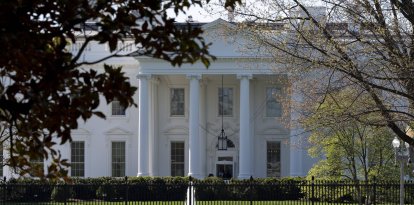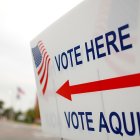More than 82 million people voted early, with a strong Republican push
White, female, over 41... learn about the profile of early voting in the 2024 presidential election.

Early voting in San Diego, Calif.
As of the day before polls opened, more than 82 million people cast their ballots early across the country, according to the University of Florida's Election Lab tracker. Of those, more than 44 million chose to turn out in person, while more than 37 million did so by mail.
Those numbers indicate that voters are again choosing early voting, which grew exponentially in 2020, en masse. In that year, driven by the pandemic: 30% of voters chose that option because of "COVID worry," according to a study from the MIT Election Data and Science Lab.
In addition, the nearly 83 million early votes cast to date represent 52% of the total 2020 vote.
High early turnout could also mean shorter lines on Election Day itself. According to the same MIT report, in 2020 the election day vote was only 28% when four years earlier it had accounted for 60% of the total.
Bad omen for Democrats
Also, in a worrisome sign for Kamala Harris, Republicans moved closer to Democrats in the percentage of early votes, where the latter usually sweep.
While 35.8% of those who went to the polls early were registered as Republicans, 37.8% were Democrats. The latter percentage is much lower than its usual mark of close to 50%.
It remains to be confirmed, however, whether the Republican gain translates into a total increase in votes or is simply an advance of ballots that would have been received later.
These early figures do allow us to conclude the success of the Republican strategy of embracing early voting, which the party traditionally regarded with disinterest and even suspicion and which was key to Joe Biden's victory in 2020. Both presidential candidate Donald Trump and the various levels of his campaign and GOP members have been urging their supporters for months to take advantage of this instance of early participation to seal their support for the Republican.
While Republicans preferred in-person early voting (39% vs. 32% Democratic), Blues preferred to drop their ballot in the post office box (42% vs. 33%). However, Republicans have a higher return rate: more than 56% of GOP supporters who requested paperwork to vote by mail actually cast their ballot, versus 51% of Democrats.
Demographics of early voting
Considering gender, women starred in early voting. They accounted for 54% of the total, compared to about 44% of men and 2% targeted as "unknowns." It is worth noting that not all states collect data by sex, only six shed light on this point in the UF Election Lab tool (Colorado, Georgia, Idaho, Michigan, North Carolina, Virginia).
The Carolinas and Georgia collect the anticipated vote ethnicity. Some 64% belonged to "non-Hispanic whites." That percentage is followed far behind by "non-Hispanic blacks," with 22%. Hispanics, at 2.7%, are a distant third. They are followed by "non-Hispanic Asian Americans" with 1.9% and "non-Hispanic Native Americans" with a mere 0.5%.
By age, the population between 41 and 65 years old is the most likely to rush to the polls before November 5. As age decreases, early voting drops notably: 17% for those between 26 and 40 years old, and a mere 9% for the lower age group. It remains to be seen whether this also means a low turnout of the young vote in general.
RECOMMENDATION






















